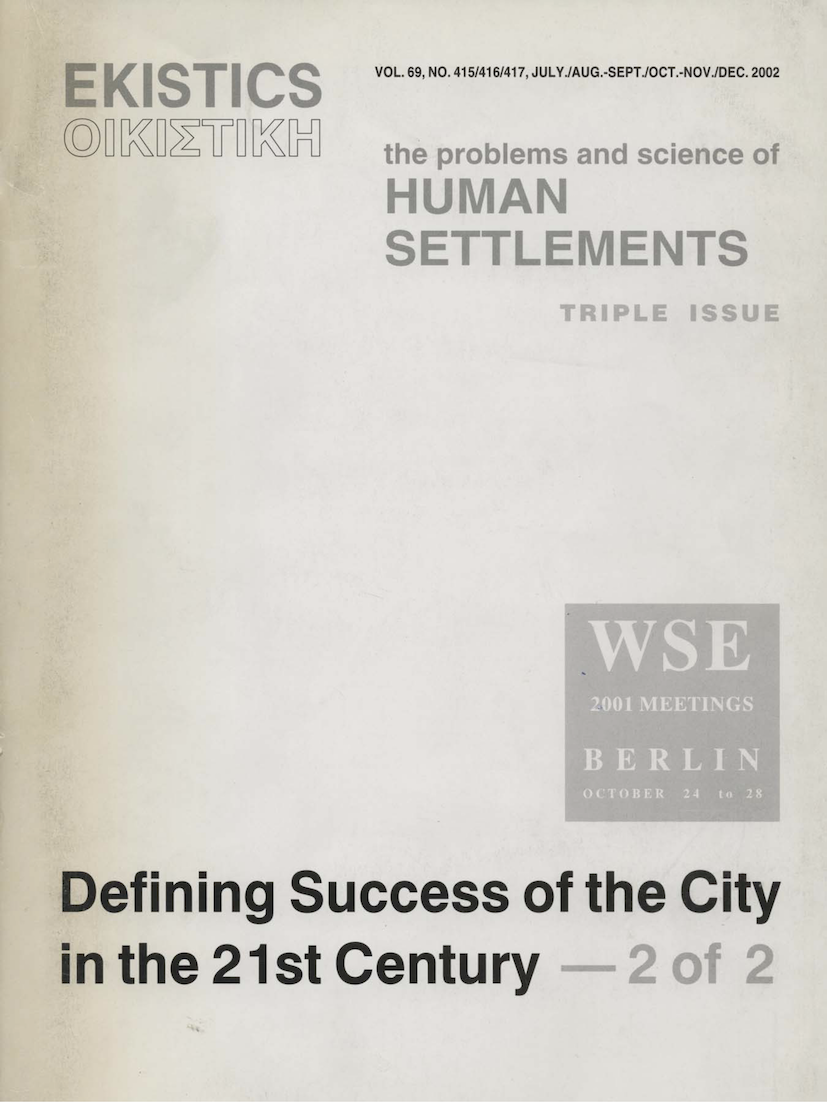Shifting from physical to electronic space: The making of electronic Ecumenopolis
DOI:
https://doi.org/10.53910/26531313-E200269415-417342Keywords:
Electronic spaceAbstract
The author has been involved in communications with and without technology, and was invited editor for the October 1983 issue of Ekistics. His Ph.D (Edinburgh University, 1974) was on Space Networks - the concept of space as a network rather than as place. As a student, he participated in the 1969 Delos Symposion on Networks. He has been a consultant to various organizations and institutions (including UNESCO; EVR ofM.l.T., USA; C.I.C., Paris; the Greek Ministry of Culture) on issues connecting technology to policy legislation and culture. His work focuses both on large-scale areas - for four years he was amember of the IDAT Europe scientific council - and also on isolated human settlements, specifically islands for a telecommunications development with simultaneous use of geographical distance to safe-guard identity. In the field of art-science-technology, he was with the C.A.V.S. of M.I.T., and has been active with geopolitical projects and project-proposals, as well as with a series of 2-way interactive video installations that articulate electronic space. Dr Mitropoulos is a member of the World Society for Ekistics (WSE). The text that follows is a slightly edited and revised version of a paper presented at the WSE Symposion "Defining Success of the City in the 21st Century," Berlin, 24-28 October, 2001.
Downloads
Published
How to Cite
Issue
Section
License
Please contact the Editor-in-Chief: editor@ekisticsjournal.org, should you have any questions on copyright for your submission.
This research journal is for Educational and Knowledge development purposes.
All material published on this site complies with our copyright and terms as described by the Attribution-NonCommercial-NoDerivaties 4.0 International (CC BY-NC-ND 4.0)






